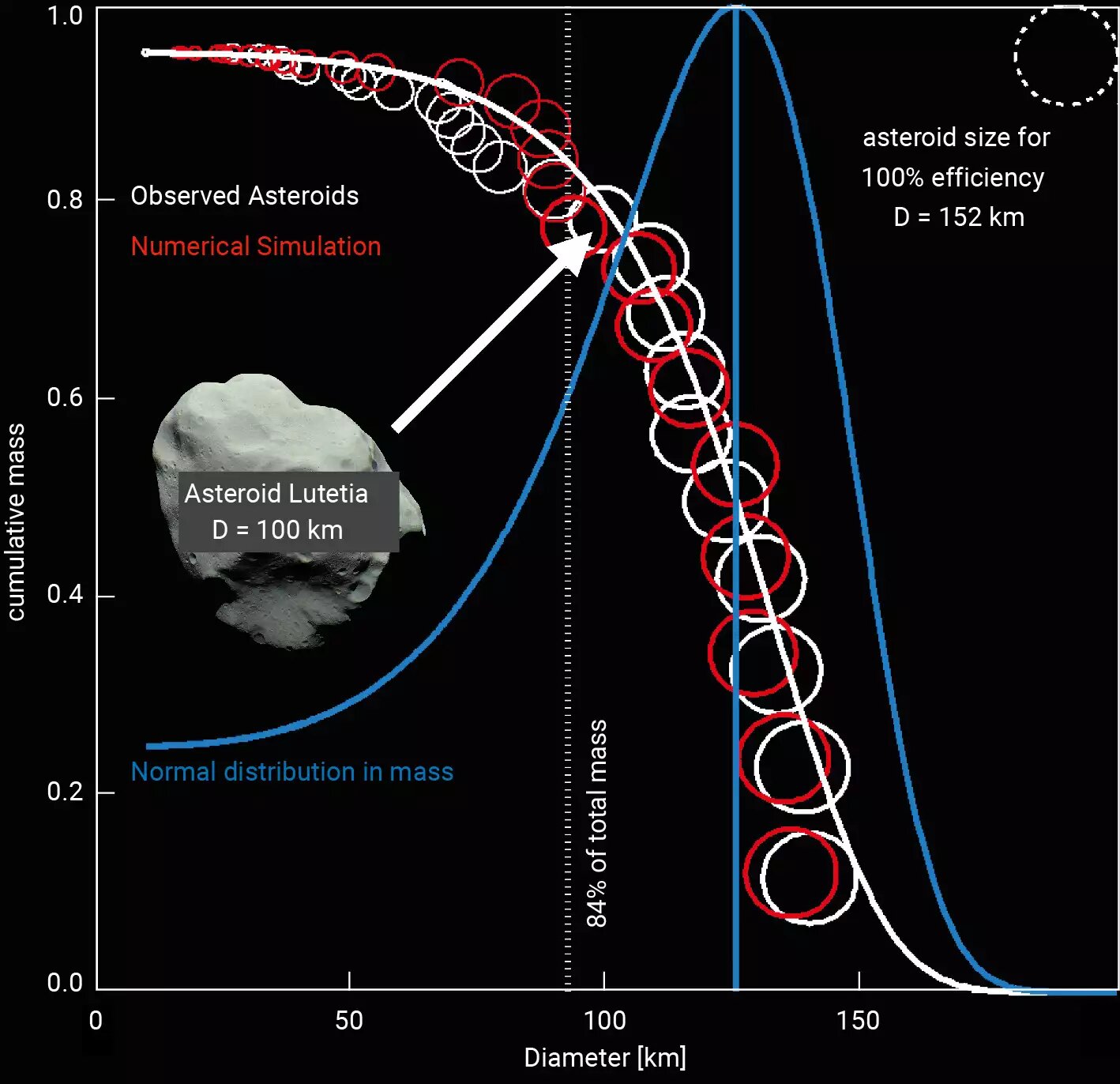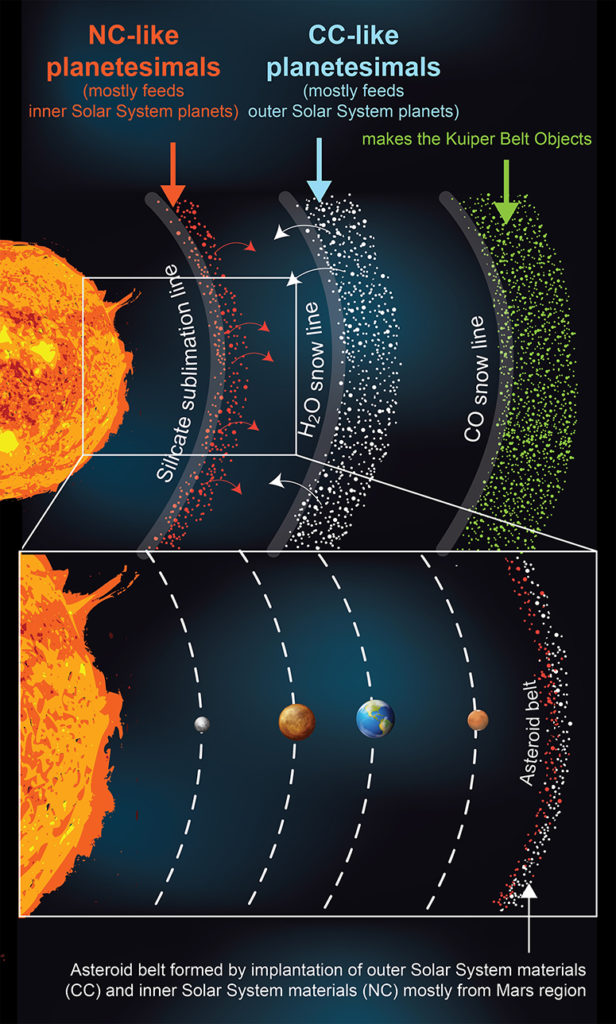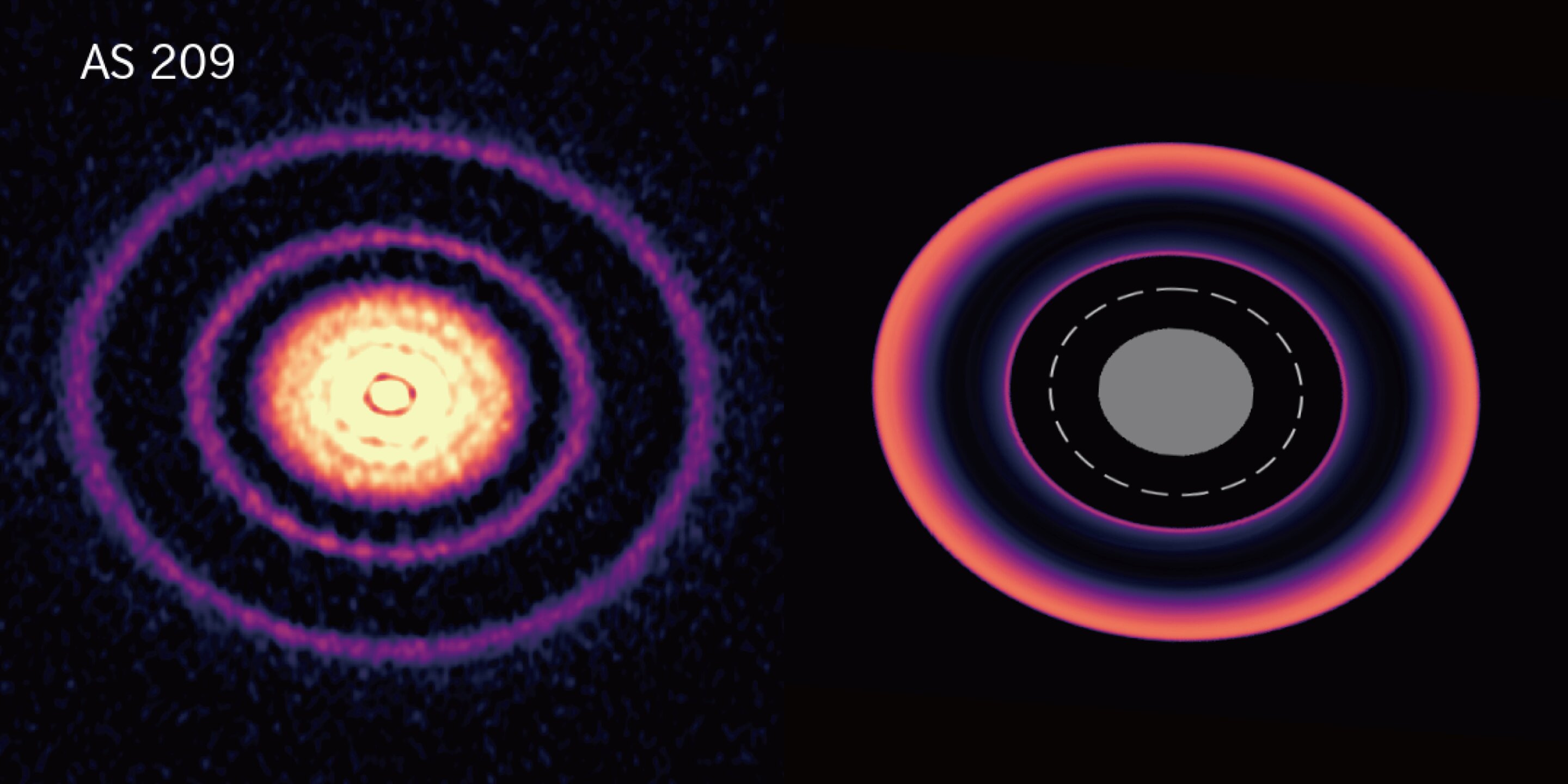
Protoplanetary Disk tagged posts



Astronomers have managed to link the properties of the inner planets of our solar system with our cosmic history: with the emergence of ring structures in the swirling disk of gas and dust in which these planets were formed...
Read More
Forming planets are one possible explanation for the rings and gaps observed in disks of gas and dust around young stars. But this theory has trouble explaining why it is rare to find planets associated with rings. New supercomputer simulations show that after creating a ring, a planet can move away and leave the ring behind...
Read More






Recent Comments